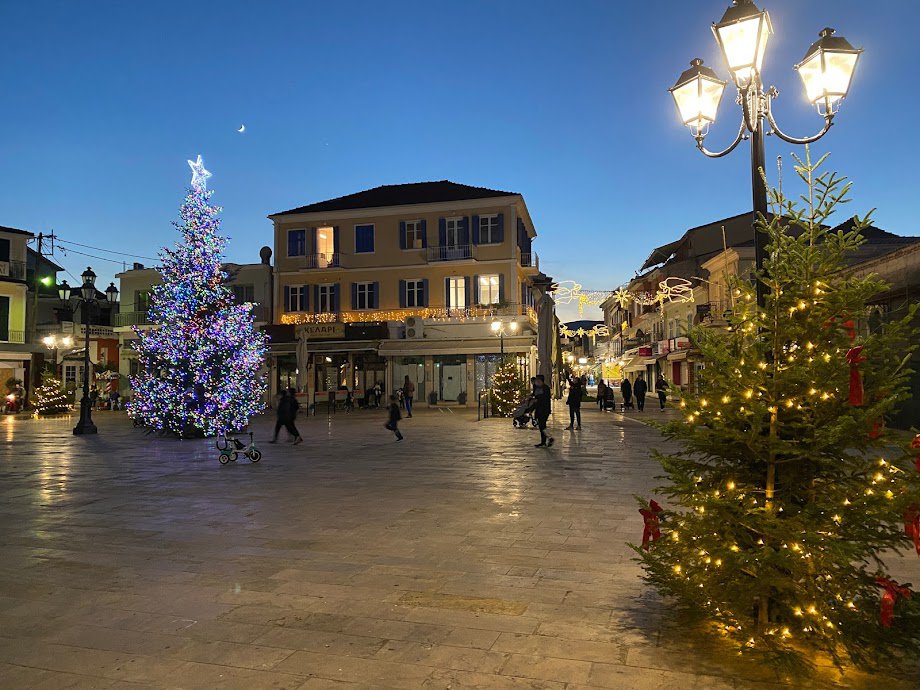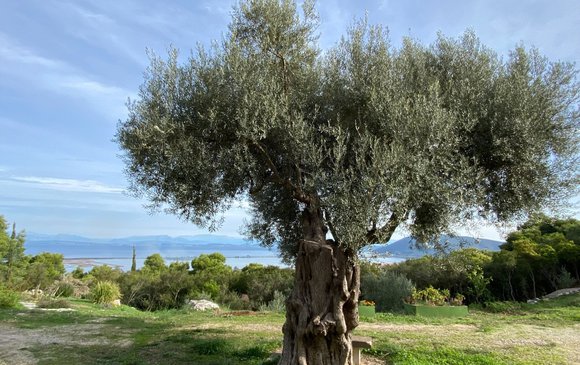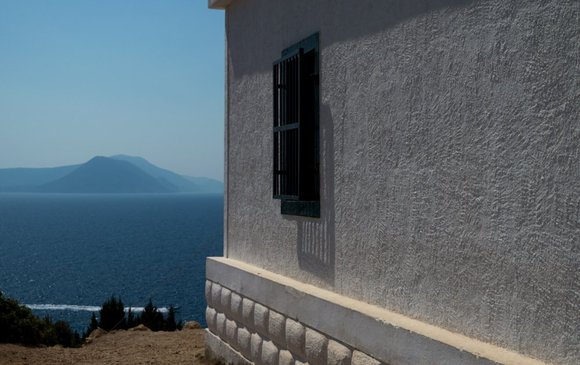''I grew up in Karya. When we were children we would get up at night, like our mothers who were preparing the Christmas loaves. We all wanted to have a part of it, in the kneading and the shaping, to add the almonds or walnuts to the dough. We watched as the oven was kindled, we enjoyed all those aromas wafting during the baking, we longed to hold a balouba (breads shaped in the form of a young girl) in our hands. That was what Christmas meant for us. That festive atmosphere was our joy. When I tell my grandchildren these things the look at me quizzically''.
Told by Kiki Kaklamani from Karya
The Cross of bread (Stavros)
The Stavros is a significant ceremonial loaf for Lefkadians of both the town and the villages. In town, the few who baked at home also baked the cross of bread. The others bought it from the bakeries. It is in the shape of a cross without a frame around it. At the centre, where the two pieces of dough meet, it is stamped with the seal. In the villages where the Stavros is baked at home, they snip the four edges with scissors and fold them over to look nice. Some put almonds or walnuts whole along the edges. And of course, like all customary and loaves for rituals, it has sesame seeds scattered over it, symbolizing fertility. There is always a seal in the centre.
The Stavros is cut up on Christmas Eve at a family ceremony. The family gathers round the table on which there is only fasting food, no meat or oil. A bottle of red wine is put in the middle of the table. The father (or elder person, if present) makes cuts in the Stavros -after having made the sign of the cross over it -and puts it on the top of the bottle of wine. Then all the family members take an edge, pull and break off the bread, wish everyone well and eat it. A cross of bread is also cut up with the same procedure on the eve of Epiphany, again with food of the Lenten fasting. In some villages it is also broken on New Year's Eve.
Christ is born, glorify him...
''At home, we used to cut the Cross of bread, the Stavros, on Christmas Eve at the table, which was loaded with delicious Lenten foods: dried fruits, nuts and figs, fresh fruit...But there was no cooked food because we used no cutlery. My mother said 'so the newborn Christ should not be hurt'.''
''My father organized everything, he knew what we would be eating during the Twelve Days of Christmas. He went up to the Skaros mountain plateau to fetch hefty logs for the cooking of the holy days. So that the cooking would be festive too. On the first day of Christmas we always had soup, usually goat. On the second day it was pasta with meat or occasionally turkey''.
Told by Tassoula Stragalinou from Karya
An attentively made young Vlakh shepherdess
''On Christmas Eve, when we made the Stavros and the Christmas loaves, when we made the Vlakhopoules, the Baloubes, my grandmother would say: 'Put a shepherdress's spindle in her hand to make the girl efficient'. So we made something like a cane, long and thin, and put it by the arm. Our Baloubes had crooks''.
Told by Eleftheria Kaklamani from Nydri
A consecrated symbol of protection
''When we prepared Christmas breads and as soon as the dough was ready, we first took a piece of the dough to make a cross -we called it stavridi. This small cross of dough was baked. Then we put it in the wheat to be milled, we put the cross back into it. It stayed there all year, and the next year, when we made the new loaves, we burned the old in the oven, for it not to be crushed, not to be thrown out; it was as if it had been consecrated''.
Told by Stamata Politi from Katouna
From the book ''The cookery of Lefkada'', Evi Voutsina, Fagottobooks editions
Continue reading: The magic of Lefkada in winter
Amazing Kourabiedes recipe (Greek Christmas Cookies)



